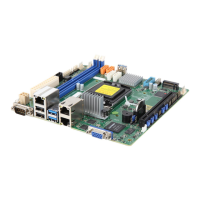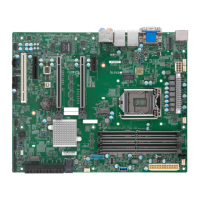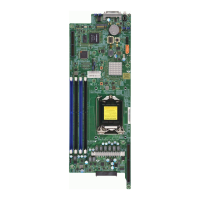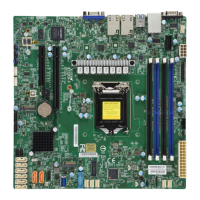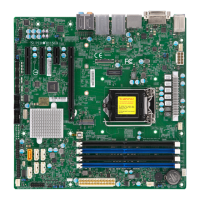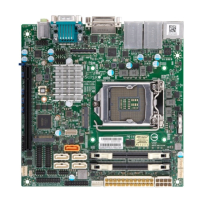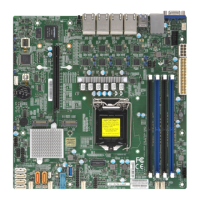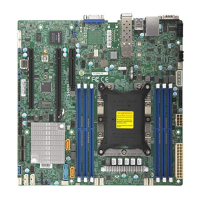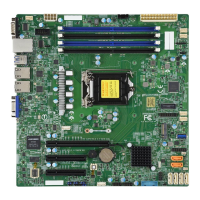
Do you have a question about the Supermicro X11SCL-F and is the answer not in the manual?
| CPU Socket | LGA 1151 |
|---|---|
| Chipset | Intel C242 |
| Max Memory | 64 GB |
| TPM Header | Yes |
| Form Factor | Micro ATX |
| Supported CPUs | Intel Xeon E-2100 series, 8th Generation Intel Core i3/Pentium/Celeron Processors |
| Memory Slots | 4 x DDR4 DIMM slots |
| Memory Type | DDR4 |
| Expansion Slots | 1x PCI-E 3.0 x16, 1x PCI-E 3.0 x4 (in x8 slot) |
| SATA Ports | 6 |
| M.2 Slots | 1 x M.2 (M-key) PCI-E 3.0 x4 and SATA3 |
| Video Outputs | 1 VGA |
| RAID Support | 0, 1, 5, 10 |
Manual purpose and audience.
Overview of the Super X11SCL-F motherboard features.
Regional contact details for Supermicro headquarters, Europe, and Asia-Pacific.
Lists main parts and provides links for drivers, manuals, and support.
Diagram of layout and table of jumpers, LEDs, and connectors.
Details CPU, Memory, Chipset, Expansion Slots, Network Controllers, BMC, Graphics, and I/O Devices.
Covers Peripherals, BIOS, Power Management, System Health, Fan Control, System Management, and LEDs.
Details Intel Xeon/Core i3 processors and C242 chipset capabilities.
Covers voltage, fan, temperature monitoring, and ACPI.
Details ATX power supply requirements and connections.
Explains ESD damage and precautions for handling components.
Guides on mounting holes, tools, and chassis compatibility.
Detailed steps for installing the LGA 1151 CPU.
Steps for installing and removing the CPU heatsink and fan.
Details memory support, population order, and optimization tips.
Diagram and definition of rear I/O panel ports.
Details USB, LAN, COM ports and their functions.
Explains JF1 header pins for chassis control panel buttons and LEDs.
Covers ATX 24-pin, 8-pin CPU power, and fan headers.
Details TPM/Port 80, M.2 Slot, Standby Power, and other headers.
Explains jumper function, CMOS Clear, ME Mode, Watchdog, and VGA Enable.
Explains UID, LAN, IPMI LAN, BMC Heartbeat, Power, and M.2 LEDs.
General steps to troubleshoot system issues before contacting support.
Addresses No Power, No Video, Boot Failure, Memory Errors, Instability, and Configuration issues.
Steps to follow before contacting technical support.
Steps for battery removal, installation, and disposal.
Introduction to the AMIBIOS Setup utility and navigation.
Overview of the Main BIOS setup screen and its features.
Covers CPU, Chipset, Memory, PCIe, USB, ACPI, TPM, and Security configurations.
Configures boot mode, order, and options, plus saving/exiting BIOS.
Lists beep codes for POST errors.
Guides on downloading and installing drivers and utilities.
Overview of SuperDoctor 5 for system health monitoring.
Standard warnings for battery replacement and disposal.
Guidelines for proper product disposal according to laws and regulations.
Introduction to UEFI firmware interface and BIOS recovery.
Steps to recover BIOS using a USB device.
